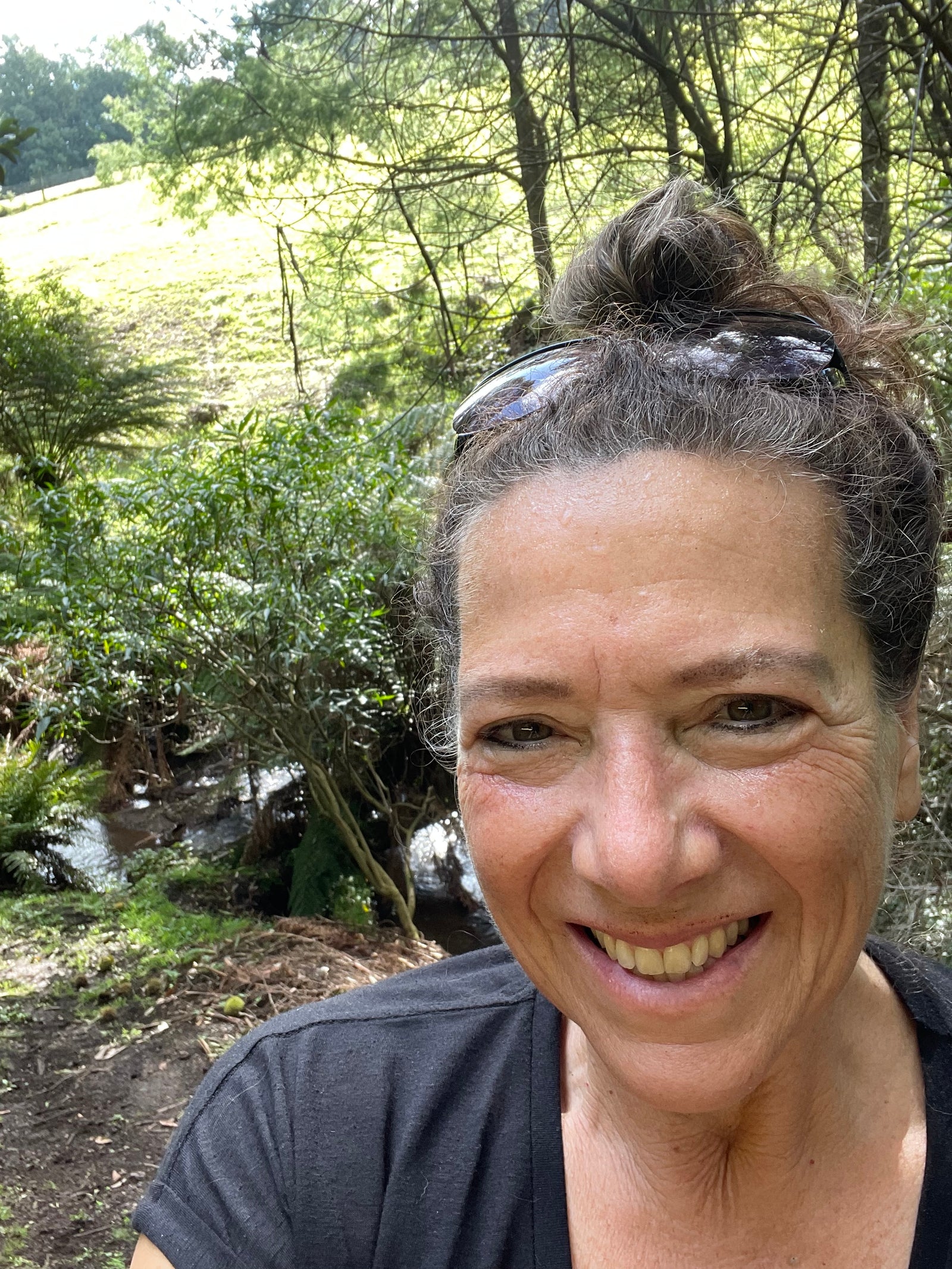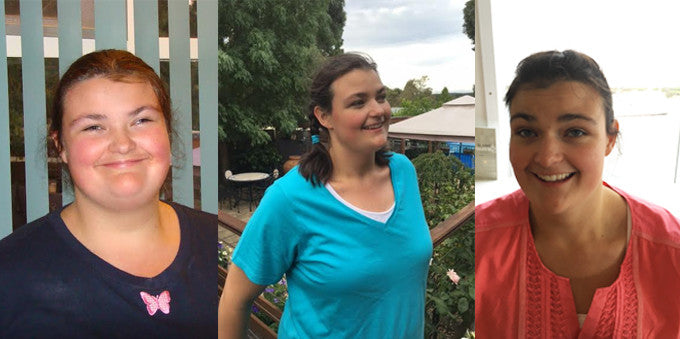65-year-old Wendy Carson has lived with sleep apnoea since she was 37 – she shares her journey to find answers, along with her trials with dismissive attitudes towards the potentially deadly condition. Here’s what she wants you to know about sleep apnoea.
“It was embarrassing being with my peers and falling asleep at a live performance, I just couldn't stay awake!!”
With a whopping 80% of people with sleep apnoea undiagnosed, it’s clear we’ve got a dangerous lack of awareness, but the misunderstandings around the condition continue past the diagnosis stage – Wendy can attest to that. But let’s wind back to where it all started. At 37, the medical secretary found herself experiencing confusing symptoms.
“I couldn't stay awake if I went out at night to a theatre or performance and I was told by my then husband that I was always snoring,” she says. “I would wake up not feeling refreshed in the morning and had a certain soreness at the back of my throat which I believe was from snoring."

But it wasn’t until an incident on the road that Wendy set out to get to the bottom of it all.
“One of the worst things that happened is when I was driving for about an hour, I suddenly realised I'd had a micro-sleep and that really scared me into taking action.”
Those with untreated sleep apnoea are 125% more likely to be involved in a car accident, making the lack of awareness of the condition all the more dangerous. Wendy’s first course of action was to get checked at a sleep clinic.
“I was sitting in the waiting room and everyone around me was asleep,” Wendy recalls. “They weighed me and said that I wasn't the usual candidate (as being overweight definitely doesn't help).
“I'm not overweight which I was told was rare and also some people have more 'fat' around their neck and that doesn't help the problem either.”
It’s true that weight can influence sleep apnoea, around 70% of individuals with the condition are obese – but there’s still a large portion of people who aren’t overweight. Wondering why there’s a link? Let’s unpack what sleep apnoea actually is and how it affects the body – it’s a sleep disorder characterised by pauses in breathing or instances of shallow or infrequent breathing during sleep. These pauses can last from a few seconds to minutes and can occur many times throughout the night. Sleep apnoea is usually associated with loud snoring and often disrupts a person's sleep, leading to fragmented and poor-quality sleep – but that only scratches the surface of the perils of the condition, with everything from high blood pressure to heart disease associated with it. The most common type of sleep apnoea is obstructive sleep apnoea (OSA), where the muscles in the back of the throat fail to keep the airway open, causing a temporary blockage – excess weight, especially around the neck and throat, can lead to the accumulation of fat deposits in the upper airway, which can narrow the airway, making it more prone to collapse during sleep. Another type is central sleep apnoea (CSA), where the brain doesn't send the proper signals to the muscles that control breathing. Typical symptoms of sleep apnoea include:
- Loud Snoring: Intermittent loud snoring is a hallmark sign of sleep apnoea – you might not know you’re snoring, but often you’ll wake up with a bit of a sore throat.
- Pauses in Breathing: Witnessed by a partner or family member, these pauses in breathing during sleep are a key indicator of sleep apnoea.
- Daytime Sleepiness: People with sleep apnoea often experience excessive daytime sleepiness, which can impact their ability to stay awake and alert during the day.
- Morning Headaches: Morning headaches are common due to decreased oxygen levels and disrupted sleep.
- Difficulty Concentrating: Sleep apnoea can lead to poor concentration, memory problems, and difficulty focusing on tasks.
- Irritability and Mood Changes: Sleep deprivation caused by sleep apnoea can lead to mood swings, irritability, and even depression.
- Frequent Waking at Night: Individuals with sleep apnoea may wake up frequently during the night, often gasping for air.
- Dry Mouth or Sore Throat: Mouth breathing due to airway obstruction can cause a dry mouth or sore throat upon waking.
- Insomnia: While it may seem contradictory, some people with sleep apnoea experience insomnia, finding it hard to fall asleep or stay asleep due to the frequent awakenings.
- Nocturia: Frequent trips to the bathroom at night could be an unusual sign of sleep apnoea, as the frequent awakenings disrupt normal sleep patterns.
- Chest Pain: While not exclusive to sleep apnoea, some individuals may experience chest pain or discomfort at night due to changes in oxygen levels.
- GERD: Gastroesophageal reflux disease (GERD) and sleep apnoea can often coexist. GERD symptoms can worsen due to the pressure changes caused by pauses in breathing.
- Morning Nausea: Reduced oxygen levels can trigger nausea upon waking.
- High Blood Pressure: Sleep apnoea can contribute to or exacerbate hypertension.
Wendy’s visit to the sleep clinic led to her diagnosis as she partook in a sleep study – but despite this progress, the road ahead wasn’t smooth.
“I hired a sleep apnoea machine, but as I was due to give birth soon, my husband said I wouldn't hear the baby over the machine. It was quite noisy, not like the modern ones today! I was then referred to a specialist dentist for a mandibular advancement splint (MAS),” she says. “Unfortunately, it pushed my teeth out of alignment (it was a one piece) and I still have trouble today chewing food as my teeth don't sit properly anymore.”
A mandibular advancement splint is used to treat sleep apnoea by repositioning the lower jaw and tongue to keep the airway open during sleep. Here's how it works:
Repositioning the Jaw and Tongue: The splint is custom-made to fit over the upper and lower dental arches. It has adjustable components that reposition the lower jaw (mandible) and, consequently, the tongue slightly forward. This adjustment creates more space at the back of the throat, preventing the collapse of soft tissues that leads to airway obstruction and sleep apnoea.
Maintaining an Open Airway: By holding the jaw and tongue in a forward position, the splint helps to maintain an open and unobstructed airway. This prevents the pauses in breathing and snoring characteristic of sleep apnoea.
Increasing Airflow: The repositioned jaw and tongue reduce airway resistance, allowing air to flow more freely through the throat. This improves breathing efficiency and oxygen intake.
Reducing Snoring: Snoring often occurs due to the vibration of soft tissues in the back of the throat. By preventing these tissues from collapsing, a mandibular splint can also help reduce or eliminate snoring.
While this all sounds good, it’s not always a solution. If the splint isn’t properly made, it can lead to dental problems for patients as it did for Wendy, only serving to further her issues, both mental and physical – and these are issues that still affect her today.
“The Dr at the PA Hospital said I could see a specialist dentist to get my teeth re-aligned, which I did, but that was going to cost huge money and I was about to have a baby and back then you didn't get paid maternity and I was using my long service leave, so money was tight,” Wendy says. “I went without any treatment for some time but I think my tiredness definitely contributed to my post-natal depression.”
But the 65-year-old kept fighting for her health, seeking out a new orthodontist to get a better-fitting splint made. But her symptoms made a comeback when she needed to replace her stint.
“At one point I would wake up with a fright and knew I wasn't breathing. It was actually hard to start breathing and it panicked me,” Wendy says, adding she’s planning to update her splint soon.
Her advice to others struggling with sleep apnoea or finding themselves suffering from confusing symptoms? Get yourself into a sleep study.

“I would tell others to see a specialist and have a sleep study done, they don't have to necessarily be done in hospital anymore. Some of the gimmicky things out there just don't work,” Wendy says. “Losing weight can help. Even sleep apnoea machines are much quieter these days.
“I definitely wouldn't recommend a one-piece splint though, not after my experience. I rang the guy that did my original one-piece splint and said to him I was having trouble chewing steak because my teeth weren't meeting. He had the hide to say, 'well maybe just eat mince'. I was seriously unimpressed that he found it amusing.”
Evidently, there are some dangerous and ignorant attitudes towards the seriousness of sleep apnoea and how it affects patients – even from medical professionals, which is all the more damaging.
“I definitely think there is a lack of awareness and understanding around sleep apnoea,” Wendy says. “I don't think a lot of people realise that it can be a very serious condition.”






Leave a comment (all fields required)